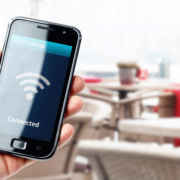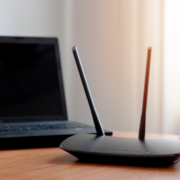Types Of Internet Cables for Wi-Fi
Wi-Fi Internet Cables
When choosing a cable for supplying Wi-Fi devices, there are a few different factors to consider. The speed requirements and type of Wi-Fi product chosen will determine the best type of cable. The three main types of cables are: coaxial, twisted pair, and fibre optic. However, all cables share some similarities. In this article we will discuss the best cables for Wi-Fi systems.
Twisted pairs and RJ-45 connectors
Ethernet cables are typically constructed of eight copper insulated wires in a plastic sleeve. The wires are twisted together in pairs, and then the pairs are twisted together to form the cable. The twists and couples affect the overall performance of the cable. For instance, crosstalk, attenuation, and electromagnetic interference (EMI) levels.
The most common type of Ethernet cable uses an RJ-45 connector. The RJ-45 is a plastic plug with eight metal contacts that insert into an RJ-45 socket. There are two basic types of Ethernet cables: straight-through and crossover. Straight-through cables are used to connect devices of the same type, such as a computer to a switch. Crossover cables are used to connect devices of different types, such as a computer to a router.
Crosstalk
Crosstalk is a phenomenon that occurs when the electrical signal transmitted over one wire negatively influences the electrical signal transmitted over any other wire. Attenuation is the regular loss of intensity of an electrical signal as it travels along a wire. EMI is noise (unwanted electrical signals) generated between wires using electrical signals transmitted. Crosstalk, attenuation, and EMI are all issues that need to be considered when designing or troubleshooting a circuit.
Twisted-Pair Ethernet
Ethernet, Cat5e, Cat6, Cat6a, Cat7, and UTP cable are all terms that refer to twisted-pair Ethernet cabling. This type of cabling is commonly used for networking and is known for its reliability and performance. UTP is one of two types of outer shielding and protection and is often used in Ethernet networks. These terms are often used interchangeably, but each one refers to a specific type of cabling.
Unshielded versus shielded cables
UTP cables are the most commonly used type of Ethernet cabling. They are less expensive and more flexible than shielded twisted-pair (STP) cabling and are therefore more commonly used in enterprise networks and Wi-Fi. STP cabling is more expensive and less pliable than UTP cabling, but it is used more often in industrial environments and noisy environments which are prone to excessive electromagnetic interference (EMI). STP cables have character pairs of wires that are wrapped in foil or another metallic shielding and may also have an outer metallic defensive that covers the entire group of twisted pairs.
Length
When choosing a length for your Ethernet cable, you will need to take into account the distance between your devices and your network change or router. The standard length is 90 meters, but you can also have customized lengths made. Longer patch leads can be used when devices are moved, but keep in mind that this will reduce the overall link length.
Colour
Ethernet cables come in many colours, and it’s a good idea to colour-code your network for ease of identification. Common colours are blue for network, yellow for phone, etc. In addition, you should consider assigning a separate colour for each of your Wi-Fi access points. When installing the cabling, put them all on a dedicated patch panel. This will make managing your Wi-Fi network much easier.
Categories of twisted-pair cables
There are several types of twisted-pair cabling, but the three most common ones for Ethernet networks are Category 5e (Cat5e), Category 6 (Cat6), and Cat6a or Cat6 Augmented. Category 5e cables are the most common and are usually used in home and office networks. Category 6 cables offer more bandwidth than Cat5e and can be used in more demanding applications, such as data centres. Cat6a cables offer even more bandwidth and are capable of handling 10 Gigabit Ethernet networks.
Cables for Wi-Fi (Cat5e)
Cat5e cabling is a popular choice in many installations, as it is limited to a maximum bandwidth of 100mhz and an internet speed of 1 Gigabit. This is applicable for all lengths of cabling installations up to 90m with patch leads and 100m for a direct cabling link. However, in the past 20 years, the minimum standard has been raised to Cat6.
Cables for Wi-Fi (Cat6)
Cat6 cabling is capable of handling significantly more bandwidth than Cat5e. It can transmit data at speeds of up to 1 gigabit over 90m and 100m, and 10 gigabits over distances of up to 55m. When designing a structured cabling installation, it is important to consider these capabilities and plan for a system that will be able to handle increased bandwidth demands in the future. However, it is important to note that in actual use, these distances may be shorter due to the nature of on-site cabling changes.
Cables for Wi-Fi (Cat6a)
Cat6a data cabling is the standard for 10 gigabit speeds and will handle PoE power distribution to Wi-Fi units. It is also better enabled to handle the distances of 90m and 100m. If your Wi-Fi units are 10 gigabit enabled or require 10 gigabit backbone cabling, then Cat6a is the minimum for installation.






